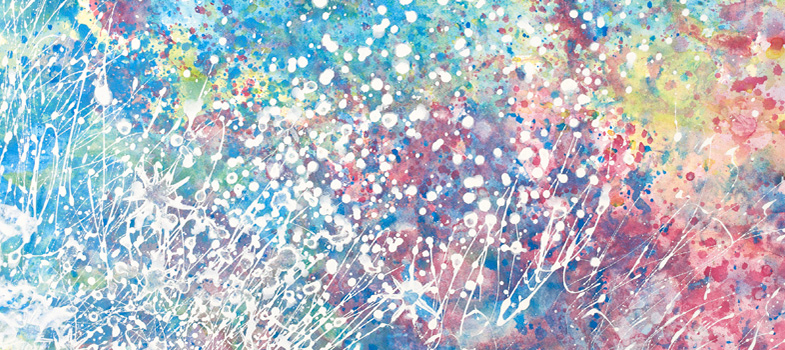Genes are commonly referred to as the ‘blueprints’ for life – the basic units of heredity, which means the passing on of physical and behavioural traits from one generation to the next. Differences in, for example, our eye colour or hair structure are due to differences in genes we inherit from our parents. Genes are small sections of very long molecular structures called deoxyribonucleic acid (DNA). DNA has a precise sequence of units, with a section of these units together constituting a gene.
Each gene contains the instructions for making a specific protein which in turn instructs our cells and tissues how to interact, grow or respond to damage and diseases. For example, there is a gene containing instructions for making the hormone insulin, a substance with an important role in regulating our blood sugar level. While we each have a gene that codes for insulin, the precise sequence of units within that gene can vary between individuals. Such differences, known as DNA variants, may cause differences in the way a protein functions
Genes are organised into 23 distinctive pairs of structures called chromosomes, carried within the cells of our body, and visible down a microscope (Fig. 10). Of each pair of chromosomes, one is inherited from the mother and one is inherited from the father. The first 22 pairs of chromosomes look the same down the microscope for men and women. The last pair are the sex chromosomes. The body cells of males have one copy each of the X chromosome and the (much smaller) Y chromosome, while the cells of females typically have two X chromosomes.

Figure 10 Photograph of the 23 pairs of chromosomes of a human male, from a light microscope image, magnified approximately 1000 times.
Show description|Hide descriptionThis is a light microscope image magnified approximately 1000 times, showing the 23 pairs of chromosomes of a human male. The first 22 pairs of chromosomes look the same down the microscope for men and women. The last pair are the sex chromosomes. The body cells of males have one copy each of the X chromosome and the (much smaller) Y chromosome, while the cells of females typically have two X chromosomes.
In humans, the 23 chromosome pairs hold tens of thousands of genes that together are known as the human genome.
Each of us inherits one member of each chromosome pair from each of our parents – but before they are passed on during sexual reproduction, material within each of these chromosome pairs crosses over during the formation of egg or sperm, part of a process known as meiosis (Fig. 11). Natural breakages occur on each paired chromosome, shown here at the white line two thirds of the way down, and a section of genetic material is exchanged such that novel combinations are formed. Each egg or sperm inherits just one of these paired chromosomes which includes a novel combination of material from each parental chromosome.

Figure 11 A chromosome pair before, during and after the cross-over of genetic material that occurs during production of eggs and sperm.
Show description|Hide descriptionThis diagram shows a chromosome pair before, during and after the cross-over of genetic material that occurs during production of eggs and sperm. The diagram shows three stages. In the first stage, a label reads 'pair of homologous chromosomes' – to tell them apart, one chromosome is coloured in red, the other is coloured in blue. Stage two, labelled 'breakage occurs during meiosis' shows the same chromosomes, both of which now have a white line crossing them two thirds of the way down, indicating natural breakages. This leads to the third stage which is labelled 'rejoining to the other member of the pair', and shows that the chromosomes have exchanged genetic material at the natural breakage points, such that novel combinations are formed (i.e. both are now a mix of red and blue material).
The result is that offspring inherit combinations of each of their parents' chromosomes, and can therefore also exhibit characteristics of each parent, and of earlier generations (Fig. 12).

Figure 12 The effect of crossing over on the arrangement of genetic material along chromosomes, shown across three generations. The three colours represent the different origins of the genetic material in the chromosomes of the grandparents, and how a grandchild thus inherits a mix of genetic material from both grandparents.
Show description|Hide descriptionThis diagram shows the effect of crossing over on the arrangement of genetic material along chromosomes, shown across three generations. At the top of the diagram, two pairs of chromosomes are shown. The first pair is labelled 'grandmother' and these are coloured in yellow and red. The second pair is labelled 'grandfather' and these are white and blue. An arrow indicates these chromosomes are passed down to the next generation. A pair of chromosomes labelled 'mother' show that natural breakages have passed down a mix of genetic material from the grandparents. As a result, one of the mother's chromosomes is coloured in a mix of yellow and red, and the other is a mix of blue and white. The third generation labelled 'child' then shows one chromosome, inherited from the mother. It is a mix of all four colours from the grandparental chromosomes, thus showing how a grandchild inherits a mix of genetic material from both grandparents.
During egg and sperm formation, and during breakage and rejoining of the parental chromosomes, additional changes to the genetic sequence may occur. Such ‘mutations’ give rise to new DNA variants which may contain altered instructions for protein development. This may in turn trigger differences in the way the brain and nervous system develop, which are then passed on to further generations






